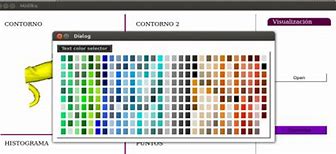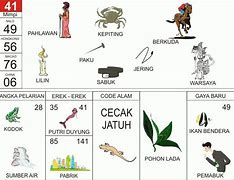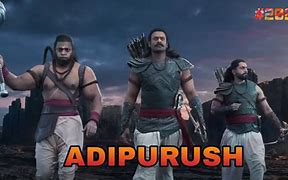
Interested in the genre? Despite what people might say, mecha is a rich character focused genre with a variety of incredibly unique stories to tell. Here's a collection of shows with short, straight-to-the-point descriptions about each. Note that some of these were translated by fans, and aren't available officially/legally. A good amount of these are available on various streaming services, tho as for all well you might have to sail the high seas a bit. Disregard my personal scores, as its subjective at end of the day and you might like it. Also please don't dismiss some of these just because they're really old, they pretty much all hold up well even today. Check each out, and see what strikes your fancy. Any shows I personally haven't watch I got info on from fellow mecha friends of mine:
TV, 2000, 25 eps Me:- Author:8
My personal "underrated gem". Your mileage might vary with this series, but the main character has one of my fave char designs and generally the series hosts a rather unique story and vibe to it. You can consider it similar in structure to Eva with the main protag wanting revenge on a sentient, alien mech that he's forced to also work with to stop aliens.
TV, 2008, 24 eps Me:- Author:8
An incredibly melancholic and bittersweet show that is quite unique in having both an action scene nearly every ep, but also heavily talks about philosophy and various facets of life. Follow Casshern, the one who started the apocalypse, as both him and the audience question who or what he truly is supposed to be.
TV, 1976, 54 eps Me:- Author:-
The first of the Robot Romance Tetralogy consisting of this, Voltes, Daimos, and Daltanious. They are all considered solid, old super robot shows.
TV, 2006, 25 eps Me:- Author:8
Very similar to Gundam in its themes. Follow the anti-hero protag Lelouch as he leads a revolution against a corrupt leadership. While I personally disliked the 2nd season, I would still rec trying it as most people seem to love it.
TV, 2018, 24 eps Me:- Author:-
While I think Franxx is only "ok", I'm still putting it here due to its popularity. I'd really just rec the manga as it takes a bad anime, and turns it into a decent enough series.
TV, 1980, 39 eps Me:- Author:8
The first show to explore the idea of a "sentient mecha". A lovecraftian horror story as our protags tries to survive against the Buff Clan, while also not succumbing to the power of the horrific metal monster they can barely control.
TV, 2002, 24 eps Me:- Author:8
A series that balances both romcom and military mecha action very well. The series tends to get more serious and leans towards the military/mecha angle as time goes on, but there's still plenty of hilarious comedy and sweet fluff here. You'll need to read the FMP Sigma manga to get the final part of the story since the anime adaption covers only 4/5 of the story at the moment.
TV, 2013, 24 eps Me:- Author:8
While mostly a standard mecha show, it has among the best cgi mecha animation I've seen despite being nearly a decade old. Would recommend for those who love well animated mecha action.
TV, 2005, 26 eps Me:- Author:6
An entirely revenge focused show, where one man and his mech will do anything to kill the man who killed his wife. Has a rather unique villain as well.
TV, 1989, 47 eps Me:- Author:8
A SoL and comedy focusing on the antics and crime fighting of the Patlabor police unit misfits. Has a female MC, and is probs the most "realistic" you can get with mecha.
TV, 1996, 26 eps Me:- Author:-
A 90s classic that is equally parody and a serious mecha show. Very enjoyable and fun cast of chars.
TV, 2005, 50 eps Me:- Author:9
Beautifully animated coming of age story with exceptional romance. Hosts a rather unique world and story. Also idc what anyone says, check out the sequel AO. It's a good show.
TV, 1982, 36 eps Me:- Author:-
A classic series that still gets entries to date. Mecha meets idols in this romance series that also deals with mechs fighting aliens.
TV, 1994, 20 eps Me:- Author:7
Magical girl meets mecha in this shoujo classic. This is a pretty fun series, and if you're curious about other mag girl x mecha shows I'd rec either Granbelm or Mai-Hime.
TV, 1972, 92 eps Me:- Author:8
The progenitor of the "super robot" genre. Still holds up surprisingly well today despite being roughly 50 years old. There's also "Shin Mazinger Shougeki! Z-hen" if you want a modern version of the classic.
TV, 1979, 43 eps Me:- Author:9
An all time classic. Started the "real robot" genre. One of the first anime to really show the effects of war with other humans. Was incredibly ahead of its time with its depiction of morally grey characters, and commentary on the horrors of war.
TV, 2007, 25 eps Me:- Author:9
My personal favorite mecha show, and a perfect intro to Gundam for newcomers. Self contained hosting a fascinating story, excellent characters, wonderful music, and animation that still holds up incredibly well today.
TV, 2021, 12 eps Me:- Author:7
Tbh the anime adaption of this is just "ok", but I put it here cuz the visual novel version of MLA is an all time mecha classic and well worth your time. It has some of the best long term char development and worldbuilding I've seen in media. Just make sure you check out Extra and Unlimited before playing Alternative, since its the finale of the trilogy.
TV, 1995, 26 eps Me:- Author:9
The one mecha show most people have heard of. While not a deconstruction, it's still an excellent show that takes several pre-established mecha tropes, uses them to its fullest, and still creates a rather unique, well crafted show.
TV, 2002, 26 eps Me:- Author:-
Not an "Evangelion clone", but is most likely a show Eva fans would quite enjoy. Both this and Eva were heavily inspired by Raideen, with Rah leaning more towards it than Eva. Just a generally well praised series that is worth your time.
TV, 2018, 12 eps Me:- Author:6
A modern reboot (and pseudo sequel, but don't worry this is self contained) of an old tokusatsu show. While loosely mecha, it still fits the genre and is a fun show in its own right. Has rather unique antags, and the whole series has a very nice down to earth vibe to it.
TV, 1983, 49 eps Me:- Author:-
One of the first (if not outright first) isekai anime. Is also probably the first "biomecha" show, due to its unique bug mechs. It's yet another great war drama like most of Tomino's shows.
TV, 1982, 50 eps Me:- Author:9
An incredibly hilarious and fun adventure, and is probs the best "happy Tomino" show. If you want a good mecha comedy, then this is for you.
OVA, 2004, 13 eps Me:- Author:-
A modern remake of the first mecha series to incorporate the idea of combining or "Gattai!" While the best parts of Getter are found in the manga and the anime adaptions vary in quality, this adaption sticks out as being very faithful to the original tone, while also being perfect for a newcomer.
TV, 2018, 76 eps Me:- Author:7
A spiritual successor to the Brave series. While definitely aimed towards kids, its still a surprisingly fun and consistent series in quality.
TV, 2004, 25 eps Me:- Author:-
The first entry in a long series full of emotional drama and tragedy. Not for the faint of heart.
TV, 2007, 27 eps Me:- Author:9
The other mecha show everyone has heard of. Def one of the best super robot shows out there, and is just "pure hype the series". Very uplifting and positive, believe in the me that believes in you!
TV, 2004, 26 eps Me:- Author:-
A modern retelling of what is considered the first mecha show with an actual "big robot". Generally considered an excellent show all around.
TV, 1963, 193 eps Me:- Author:-
The very first mecha anime, and one of the very first anime in general. I'll be real there's only half of this dubbed and barely anything subbed, tho I'll still put it here just due to its historical significance
TV, 1999, 26 eps Me:- Author:8
Batman meets Cowboy Bebop meets big robot. Discover the secrets behind the city that lost all its memories 40 years ago.
OVA, 1988, 6 eps Me:- Author:8
A late 80s classic. A somewhat short watch with beautiful animation, and a rare female MC. Would 100% rec for any EVA, Gainax, or Trigger fans.
TV, 1997, 49 eps Me:- Author:8
The final and generally considered "best" entry of the Brave series. Pure hotblooded super robot action, and is generally a blast. Be sure to check out the GGG Final sequel as it takes everything that makes GGG great, and makes it amazing.
TV, 2021, 11 eps Me:- Author:-
A hallmark of modern mecha. Is rather unique in its use of spider-esque mechs, and has great chars.
TV, 1981, 75 eps Me:- Author:-
An exceptionally well written anime about revolution and war, somewhat similar to the first Gundam. Considerably ahead of its time.
TV, 1975, 50 eps Me:- Author:-
An extremely influential anime for the genre, and while not quite at the caliber of Mazinger or Getter, it's still important to the history of the genre. Quality of the subs may vary though.
TV, 1983, 52 eps Me:- Author:-
A "realistic" mecha show focusing on an abandoned super-soldier having to survive through guerilla tactics. A thoroughly engaging war drama.
TV, 1999, 26 eps Me:- Author:-
A workplace comedy somewhat similar to Patlabor. Follow these corporate workers as they desperately try to keep up with regulations and the government messing with their super robot trying to save the world.
TV, 2005, 26 eps Me:- Author:-
Mostly a homage to older super robot shows with a good bit of romance. A mostly standard, but fun show.
TV, 1988, 45 eps Me:- Author:-
A classic mecha isekai mostly aimed towards kids, but is a fun, comfy show in its own right. Subs might be of questionable quality, but its still "watchable".
TV, 2014, 25 eps Me:- Author:-
An absolute trainwreck of a show so bad, it loops around to being good. Has one of the most raw and cool af female MCs in anime.
Humanoid walking vehicles in science fiction
This article is about the term used in science fiction, video games, anime, and manga. For other uses, see
Not to be confused with
In science fiction, mecha (Japanese: メカ, Hepburn: meka) or mechs are giant robots or machines, typically depicted as piloted, humanoid walking vehicles. The term was first used in Japanese after shortening the English loanword 'mechanism' (メカニズム, mekanizumu) or 'mechanical' (メカニカル, mekanikaru), but the meaning in Japanese is more inclusive, and 'robot' (ロボット, robotto) or 'giant robot' is the narrower term.
Fictional mecha vary greatly in size and shape, but are distinguished from vehicles by their biomorphic appearance, and are often much larger than human beings. Different subgenres exist, with varying connotations of realism. The concept of Super Robot and Real Robot are two such examples found in Japanese anime and manga.
Real-world piloted humanoid or non-humanoid robotic platforms, existing or planned, may also be called "mecha". In Japanese, "mecha" may refer to mobile machinery or vehicles (including aircraft) in general, piloted or otherwise.
'Mecha' is an abbreviation, first used in Japanese, of 'mechanical'. In Japanese, mecha encompasses all mechanical objects, including cars, guns, computers, and other devices, and 'robot' or 'giant robot' is used to distinguish limbed vehicles from other mechanical devices.[citation needed] It has also become associated with large humanoid machines with limbs or other biological characteristics. Mecha differ from robots in that they are piloted from a cockpit, typically located in the chest or head of the mech.[1]
While the distinction is often hazy, mecha typically does not refer to form-fitting powered armor such as Iron Man's suit. They are usually much larger than the wearer, like Iron Man's enemy the Iron Monger, or the mobile suits depicted in the Gundam franchise.
In most cases, mecha are depicted as fighting machines, whose appeal comes from the combination of potent weaponry with a more stylish combat technique than a mere vehicle. Often, they are the primary means of combat, with conflicts sometimes being decided through gladiatorial matches. Other works represent mecha as one component of an integrated military force, supported by and fighting alongside tanks, fighter aircraft, and infantry. The applications often highlight the theoretical usefulness of such a device. Combining a tank's resilience and firepower with infantry's ability to cross unstable terrain. In some continuities, special scenarios are constructed to make mecha more viable than current-day status. For example, in Gundam the fictional Minovsky particle inhibits the use of radar, making long-range ballistic strikes impractical, thus favouring relatively close-range warfare of Mobile Suits.[2]
However, some stories, such as the manga/anime franchise Patlabor and the American wargame BattleTech universe, also encompass mecha used for civilian purposes, such as heavy construction work, police functions, or firefighting. Mecha also have roles as transporters, recreation, advanced hazmat suits, and other research and development applications.
Mecha have been used in fantasy settings, for example in the anime series Aura Battler Dunbine, The Vision of Escaflowne, Panzer World Galient, and Maze. In those cases, the mecha designs are usually based on some alternative or "lost" science-fiction technology from ancient times. In case of anime series Zoids, the machines resemble dinosaurs and animals, and have been shown to evolve from native metallic organisms.[3][4]
A chicken walker is a fictional type of bipedal robot or mecha, distinguished by its rear-facing knee joint. This type of articulation resembles a bird's legs, hence the name.[5] However, birds actually have forward-facing knees; they are digitigrade, and what most call the "knee" is actually the ankle.[6]
The 1868 Edward S. Ellis novel The Steam Man of the Prairies featured a steam-powered, back-piloted, mechanical man. The 1880 Jules Verne novel The Steam House (La Maison à Vapeur) featured a steam-powered, piloted, mechanical elephant. One of the first appearances of such machines in modern literature was the tripod (or "fighting-machine", as they are known in the novel) of H. G. Wells' famous The War of the Worlds (1897). The novel does not contain a fully detailed description of the tripods' mode of locomotion, but it is hinted at: "Can you imagine a milking stool tilted and bowled violently along the ground? That was the impression those instant flashes gave. But instead of a milking stool, imagine it a great body of machinery on a tripod stand."
Ōgon Bat, a kamishibai that debuted in 1931 (later adapted into an anime in 1967), featured the first piloted humanoid giant robot, Dai Ningen Tanku (大人間タンク),[7] but as an enemy rather than a protagonist. In 1934, Gajo Sakamoto launched Tank Tankuro (タンクタンクロー) on a metal creature that becomes a battle machine.[8]
The first humanoid giant robot piloted by the protagonist appeared in the manga Atomic Power Android (原子力人造人間, Genshi Ryoku Jinzō Ningen) in 1948.[9] The manga and anime Tetsujin 28-Go, introduced in 1956, featured a robot, Tetsujin, that was controlled externally by an operator by remote control. The manga and anime Astro Boy, introduced in 1952, with its humanoid robot protagonist, was a key influence on the development of the giant robot genre in Japan. The first anime featuring a giant mecha being piloted by the protagonist from within a cockpit was the Super Robot show Mazinger Z, written by Go Nagai and introduced in 1972.[10] Mazinger Z introduced the notion of mecha as pilotable war machines, rather than remote-controlled robots. Ken Ishikawa and Go Nagai, later, introduced the concept of 'combination' (gattai (合体)), where several units slot together to form a super robot, with Getter Robo (1974 debut).[11]
An early use of mech-like machines outside Japan is found in "The Invisible Empire", a Federal Men's story arc by Jerry Siegel and Joe Shuster (serialized 1936 in New Comics #8–10).[12] Other examples include the Mexican comic Invictus by Leonel Guillermo Prieto and Victaleno León; the Brazilian comic Audaz, o demolidor, by Álvaro "Aruom" Moura and Messias de Mello (1938–1949), inspired by Invictus, created for the supplement A Gazetinha from the newspaper A Gazeta;[13] Kimball Kinnison's battle suit in E. E. "Doc" Smith's Lensman novel Galactic Patrol (1950);[14] the French animated film The King and the Mockingbird (first released 1952),[15] and Robert Heinlein's waldo in his 1942 short story, "Waldo" and the Mobile Infantry battle suits in Heinlein's Starship Troopers (1958).[14]
A transforming mech can transform between a standard vehicle (such as a fighter plane or transport truck) and a fighting mecha robot. This concept of transforming mecha was pioneered by Japanese mecha designer Shōji Kawamori in the early 1980s, when he created the Diaclone toy line in 1980 and then the Macross anime franchise in 1982. In North America, the Macross franchise was adapted into the Robotech franchise in 1985, and then the Diaclone toy line was adapted into the Transformers franchise in 1986. Some of Kawamori's most iconic transforming mecha designs include the VF-1 Valkyrie from the Macross and Robotech franchises, and Optimus Prime (called Convoy in Japan) from the Transformers and Diaclone franchises.[16][17]
In Japan, "robot anime" (known as "mecha anime" outside Japan) is one of the oldest genres in anime.[18] Robot anime is often tied in with toy manufacturers. Large franchises such as Gundam, Macross, Transformers, and Zoids have hundreds of different model kits.
The size of mecha can vary according to the story and concepts involved. Some of them may not be considerably taller than a tank (Armored Trooper Votoms,Yatterman, Megazone 23, Code Geass), some may be a few stories tall (Gundam, Escaflowne, Bismark, Gurren Lagann), others can be titan sized as tall as a skyscraper (Space Runaway Ideon, Genesis of Aquarion, Science Ninja Team Gatchaman, Neon Genesis Evangelion), some are big enough to contain an entire city (Macross), some the size of a planet (Diebuster), galaxies (Getter Robo, Tengen Toppa Gurren Lagann), or even as large as universes (Tengen Toppa Gurren Lagann: Lagann-hen, Demonbane, Transformers: Alternity).
The first titan robots seen were in the 1948 manga Atomic Power Android (原子力人造人間, Genshiryoku Jinzō Ningen)[9] and Mitsuteru Yokoyama's 1956 manga Tetsujin 28-go. However, it was not until the advent of Go Nagai's Mazinger Z that the genre was established. Mazinger Z innovated by adding the inclusion of futuristic weapons, and the concept of being able to pilot from a cockpit[10] (rather than via remote control, in the case of Tetsujin). According to Go Nagai:
I wanted to create something different, and I thought it would be interesting to have a robot that you could drive, like a car.[10]
Mazinger Z featured giant robots that were "piloted by means of a small flying car and command center that docked inside the head."[10] It was also a pioneer in die-cast metal toys such as the Chogokin series in Japan and the Shogun Warriors in the U.S., that were (and still are) very popular with children and collectors.
Robot/mecha anime and manga differ vastly in storytelling and animation quality from title to title, and content ranges from children's shows to ones intended for an older teen or adult audience.
Some of the first mecha featured in manga and anime were super robots. The super robot genre features superhero-like giant robots that are often one-of-a-kind and the product of an ancient civilization, aliens or a mad genius. These robots are usually piloted by Japanese teenagers via voice command or neural uplink, and are often powered by mystical or exotic energy sources.[19]
The later real robot genre features robots that do not have mythical superpowers, but rather use largely conventional, albeit futuristic weapons and power sources, and are often mass-produced on a large scale for use in wars.[19] The real robot genre also tends to feature more complex characters with moral conflicts and personal problems.[20] The genre is therefore aimed primarily at young adults instead of children.[21] Mobile Suit Gundam (1979) is largely considered the first series to introduce the real robot concept and, along with The Super Dimension Fortress Macross (1982), would form the basis of what people would later call real robot anime.[22]
Some robot mecha are capable of transformation (Macross and Zeta Gundam) or combining to form even bigger ones (Beast King GoLion and Tengen Toppa Gurren Lagann), the latter called 'combination'. Go Nagai and Ken Ishikawa are often credited with inventing this in 1974 with Getter Robo.
Not all mecha need to be completely mechanical. Some have biological components with which to interface with their pilots, and some are partially biological themselves, such as in Neon Genesis Evangelion, Eureka Seven, and Zoids.
Mecha based on anime have seen extreme cultural reception across the world. The personification of this popularity can be seen as 1:1-sized Mazinger Z, Tetsujin, and Gundam statues built across the world.
Mecha are often featured in computer and console video games. Because of their size and fictional power, mecha are quite popular subjects for games, both tabletop and electronic. They have been featured in video games since the 1980s, particularly in vehicular combat and shooter games, including Sesame Japan's side-scrolling shooter game Vastar in 1983,[23] various Gundam games such as Mobile Suit Gundam: Last Shooting in 1984 and Z-Gundam: Hot Scramble in 1986,[24] the run and gun shooters Hover Attack in 1984 and Thexder in 1985, and Arsys Software's 3D role-playing shooters WiBArm in 1986 and Star Cruiser in 1988. Historically mecha-based games have been more popular in Japan than in other countries.[25]
There are a few real prototypes of mecha-like vehicles. Currently almost all of these are highly specialized or just for concept purpose, and as such may not see mass production. Most of these experimental projects were made and first presented in East Asia.
In the Western world, there are few examples of mecha, however, several machines have been constructed by both companies and private figures.
Anime with mecha that's less sci-fi (or not at all) and more fantasy-based where the mechs are more like mechanical or magical giant suits of armour and feudal knight-like. Anime likes to blend sci-fi and fantasy together so some of these are going to be kinda' specious, especially towards the end. For series I will only link the first or base anime rather than listing all the sequels.
TV, 1996, 26 eps Me:- Author:9
The ultimate and best example of mecha being operated like gallant knights.
TV, 1994, 20 eps Me:- Author:-
The penultimate and second best example of mecha being operated light gallant knights.
TV, 1984, 25 eps Me:- Author:-
TV, 1983, 49 eps Me:- Author:-
TV, 1988, 45 eps Me:- Author:-
TV, 1994, 52 eps Me:- Author:-
TV, 1990, 38 eps Me:- Author:-
TV, 2003, 24 eps Me:- Author:-
OVA, 1992, 7 eps Me:- Author:-
TV, 2017, 13 eps Me:- Author:-
TV, 1984, 23 eps Me:- Author:-
OVA, 1987, 1 ep Me:- Author:5
TV, 1989, 41 eps Me:- Author:-
TV, 2014, 25 eps Me:- Author:-
OVA, 2009, 13 eps Me:- Author:-
It's weird seeing a Tenchi Muyo spin-off be an isekai/fantasy/mech thing, but here we are.
TV, 2007, 26 eps Me:- Author:-
TV, 2006, 26 eps Me:- Author:-
Specious. It's really more sci-fi than fantasy (to me) and the girls pilot aircraft more so than mechs.
OVA, 1991, 2 eps Me:- Author:7
Specious. There is a pair of red and blue autonomous robot guardians, if I remember correctly.
OVA, 1996, 2 eps Me:- Author:6
Specious. It's more like sci-fi empire vs. magical JRPG village (that also has cyborgs).
Dinas Perpustakaan dan Kearsipan Provinsi Kepulauan Riau
Bantu kami meningkatkan layanan dengan feedback dari Anda.
Sektor apa yang paling mewakili Anda saat ini ? Peneliti/Akademisi Pemerintahan Media Industri/Bisnis Organisasi Non Profit/Sosial Lainnya
Tuliskan saran atau kendala yang Anda alami dalam menjelajahi website ini agar kami dapat memberikan layanan lebih baik lagi !
I was granted early access into TheTripoint’s work, and write this review based on my experience reading the first arc.
TL;DR: There’s mechs, there’s magic, there’s demons. 86 meets LitRPG Progression Fantasy in this fast-paced adrenaline shot of a novel.
Have you ever read a progression fantasy novel where you wish the protagonist had a little more…oomph? Swords and arrows are powerful, but few things compare to the explosive might of a tank cannon.
Well, this is it. Get ready for one hell of a ride aboard the pain train that is Ace mech pilot Hans Hoffman.
Hans is introduced to us as a broken man. A naked blade that has witnessed death from both ends of the gun. After many years dodging death at the frontlines, he’s killed acting as the rearguard for his retreating unit.
Yet instead of heaven (or hell), he wakes up in an entirely new world. The landscape is pristine, untouched by the ravages of war. More so, magic is in the air.
A mysterious god grants him the ability to cheat death itself, yet even in a fantasy world one law remains untouched: nothing is free. With great power comes great responsibility, and Hans is charged with fighting a seemingly unstoppable enemy: demons.
Along his travels he will encounter many faces familiar and new, wonders like no other and fresh horrors plucked straight from the deepest depths of his nightmares.
Re:Jager features a wealth of characters.
Hans’s duties will take him through dozens of new places with their own culture and people. Nobody is expressly good or bad, though the landscape is rife with hate, distrust and hope that shape the hearts and minds in widly different ways.
The main cast of characters all have fully-fledged personalities; this story is driven entirely by their goals, their fears, their prejudices and their hope for a better future.
Each one has different coping mechanisms and beliefs, from Hans’s omnipresent cynical realism all the way to unabashed hope and belief in the goodness of humanity. Re:Jager has it all; the good, the bad, and especially the ugly.
TheTripoint’s love for the core elements of the story is obvious.
Re:Jager is a timeloop fantasy novel at its core, where the main character using his unique ability to turn back time and avert disaster, avoid ambushes or even preserve his loved ones from the horrors of conflict in a world ridden by once-living entities driven to insanity and given grotesque powers by the injustices suffered before or at their death.
Unlike similar works, however, where the main character is some sword-totting white knight with a heart of gold or a wise magician searching for mystical secrets, Re:Jager’s protagonist is a grunt. A very capable grunt from a wartorn era, piloting an engine of destruction. He’s a mech pilot: an ace, possibly the best one to have ever lived. Where others might charge into the foe or cast winding spells, he uses the tactics, technology and even magic —granted by the strange system— he possesses as a mech pilot to triumph over the enemy.
And if that’s not enough…he’ll die. And come back faster, stronger and wiser the next time.
There’s a visceral satisfaction to watching bloodthirsty demons shatter into fragments and blown-out skeletons, hopeless to match a fearless soldier who knows their every killing blow, hidden ace and escape route.
Like every other top-tier novel, Re:Jager’s grammar and prose is impeccable. You can trust in TheTripoint’s abilities to deliver a smooth text with none of the metaphorical bumps that drive many a good plot into obscurity.























